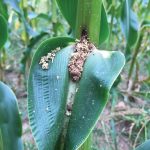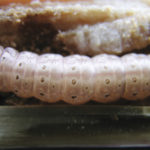Bayer Crop Science staff say corn production success for Ontario growers includes rotation out of corn, and rotating modes of action when fighting insect pests in the crop.


Hitting it with the same solution year-after-year will just create a new problem

Critical tools for controlling corn borer could be lost

Originally designed for insect larvae, the potato vine crusher lowers germination rate of weed seeds

Bt breakdown highlights the importance of following refuge protocols

There’s been no Bt resistance yet in Manitoba’s European corn borer population, but entomologist John Gavloski is keeping a sharp eye out

It’s already a major pest in the U.S. Corn Belt, but it can still be easily controlled here
